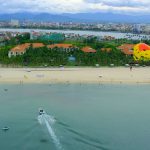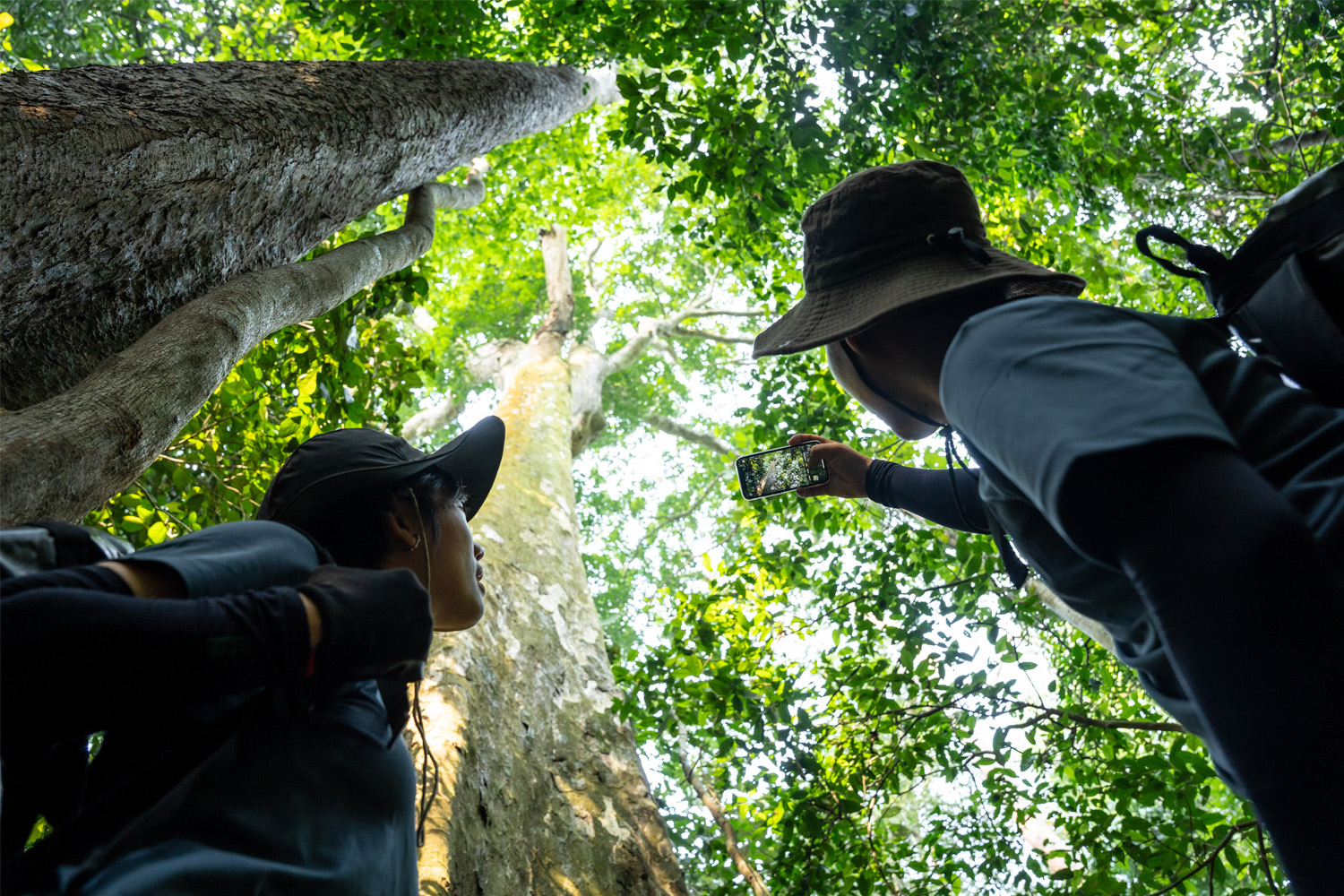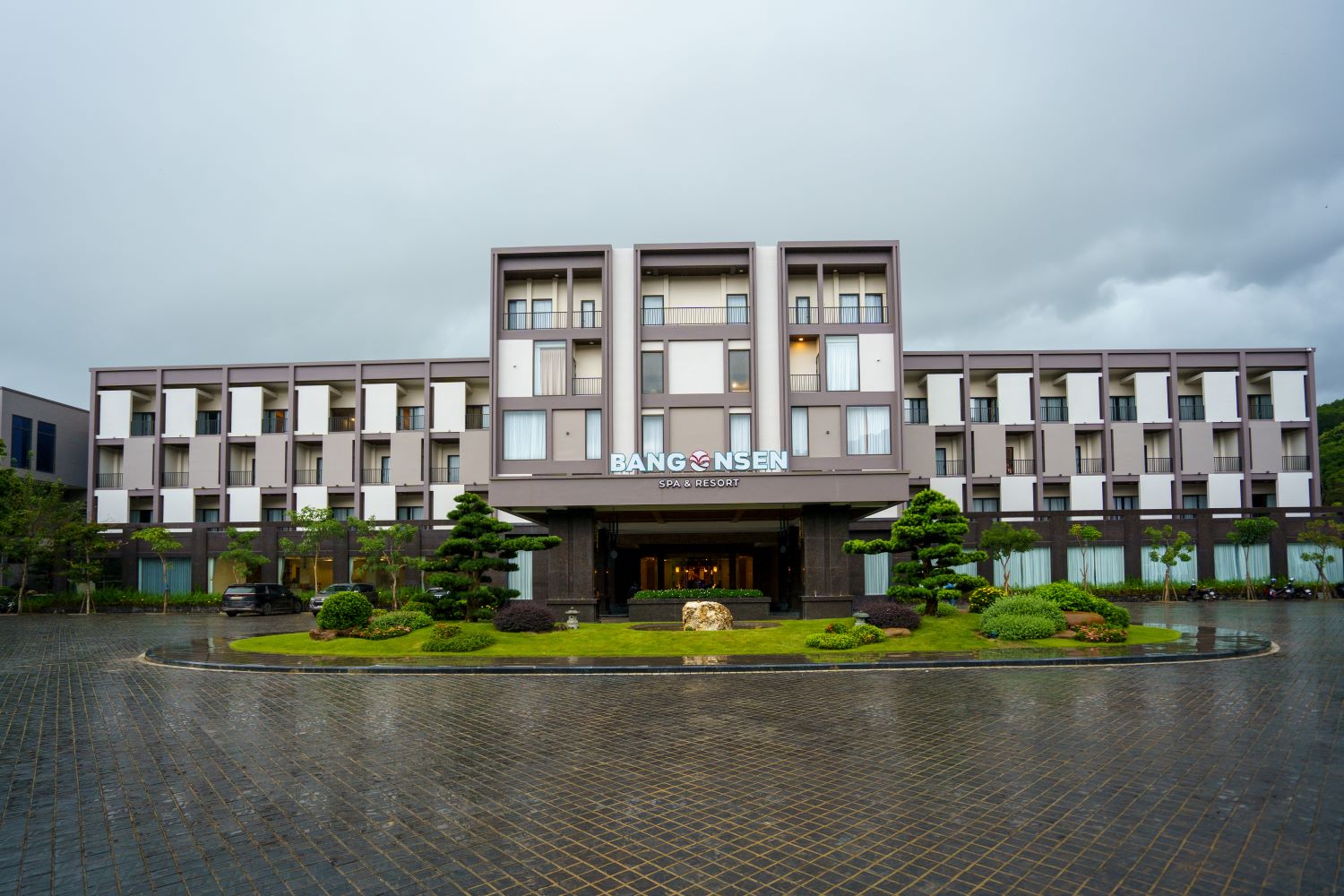Located in the heart of Dong Hoi City, Quang Binh Gate is not only an important historical witness of Quang Binh but also a symbol of the strength and resilience of its people during the Trinh–Nguyen Civil War. Having endured many historical changes, Quang Binh Gate was recognized as a National Historic Site in 1992 and remains one of the must-visit attractions when traveling to Quang Binh.
Let’s explore this 400-year-old historical site, a symbol of Quang Binh that preserves significant cultural values and historical memories of Central Vietnam.

Where is Quang Binh Gate?
Quang Binh Gate is located in Hai Dinh Ward, Dong Hoi City, Quang Binh Province. Situated near QL1A (one of the most important routes in Vietnam), it serves as a key connection between the city’s historical landmarks. With this prime location, visitors can easily find Quang Binh Gate to gain insights into its past.
Beyond being a historical site, Quang Binh Gate attracts visitors with its unique architecture, serene surroundings, and profound cultural significance. Each year, thousands of domestic and international tourists visit Quang Binh Gate to learn about its history, admire its beauty, and capture memorable photos.
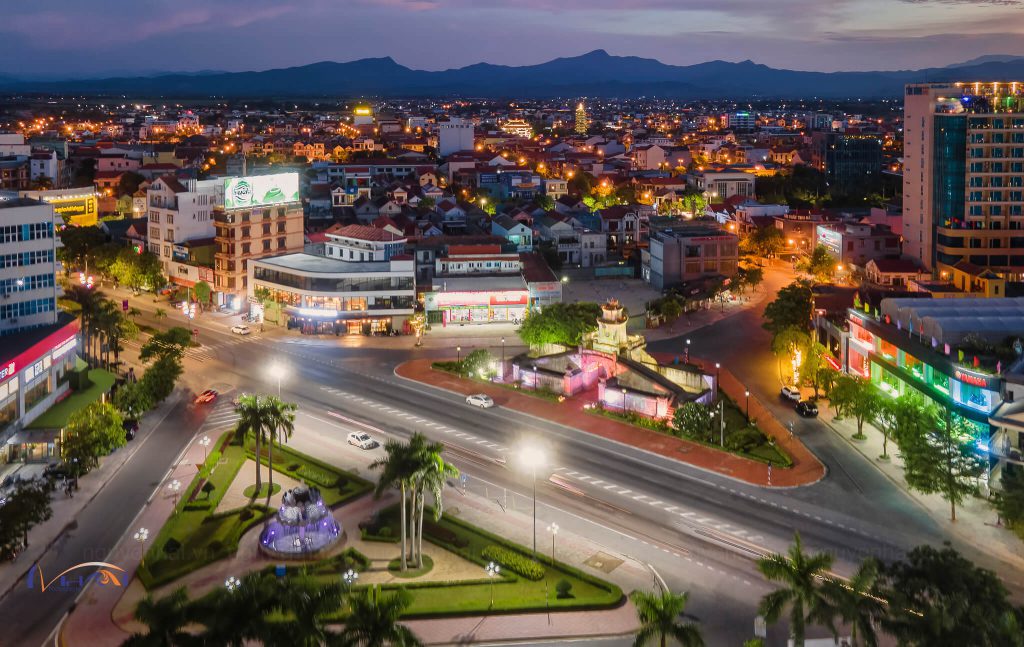
History of Quang Binh Gate
Construction
Quang Binh Gate was built in 1630 under Lord Nguyen Phuc Nguyen during the Trinh–Nguyen Civil War (1627-1672), a period of intense conflict as Vietnam was divided into two regions: Dang Trong (the South), ruled by the Nguyen Lords, and Dang Ngoai (the North), controlled by the Trinh Lords. This era saw numerous battles as both factions struggled for power and territory.

Quang Binh Gate was a crucial defensive structure within the Luy Thay system, designed and built under the guidance of the renowned general Dao Duy Tu. The Luy Thay defense system consisted of three main fortifications: Truong Duc Rampart, Nhat Le Rampart, and Tran Ninh Rampart, stretching from the Nhat Le River estuary to Dau Mau Mountain. This defense line protected the South from Northern invasions.
Dao Duy Tu, a brilliant military strategist serving Lord Nguyen Phuc Nguyen, proposed and designed the Luy Thay system to strengthen the Nguyen army. He utilized the natural terrain of Quang Binh and incorporated advanced construction techniques of the time to create an interconnected and solid defense network. Quang Binh Gate, strategically positioned as the “gateway to the south,” played a vital role in controlling and securing the border of Dang Trong.
For over 45 years of continuous warfare, Quang Binh Gate witnessed fierce battles between the Trinh and Nguyen forces. In 1648, the Nguyen army successfully repelled the Trinh forces from Quang Binh, making Quang Binh Gate a stronghold for Dang Trong. Even after the peace treaty of 1672, the gate remained a strategic defense point for the Nguyen Lords.
Throughout history, Quang Binh Gate saw numerous battles, from the Trinh–Nguyen conflict to later struggles during the resistance wars against the French and Americans. Despite undergoing multiple restorations, the site retains the distinctive architectural features of an ancient fortress.
Over hundreds of years, Quang Binh Gate has undergone several restorations:
- Nguyen Dynasty (1802-1945): After Emperor Gia Long unified the country, Quang Binh Gate remained an important fortress protecting the central region. During this period, the structure was renovated and reinforced multiple times to adapt to the changing political and military situation.
- French Colonial Period (1884-1945): During this time, Quang Binh Gate suffered severe damage due to wars and the colonial exploitation policies of the French. However, it continued to be used as a military site.
- Resistance War against the United States (1954-1975): Quang Binh Gate served as a key military post and defensive line for the people and soldiers of Quang Binh. During this period, the structure endured heavy damage from wartime bombings but remained standing as a symbol of resilience and determination.
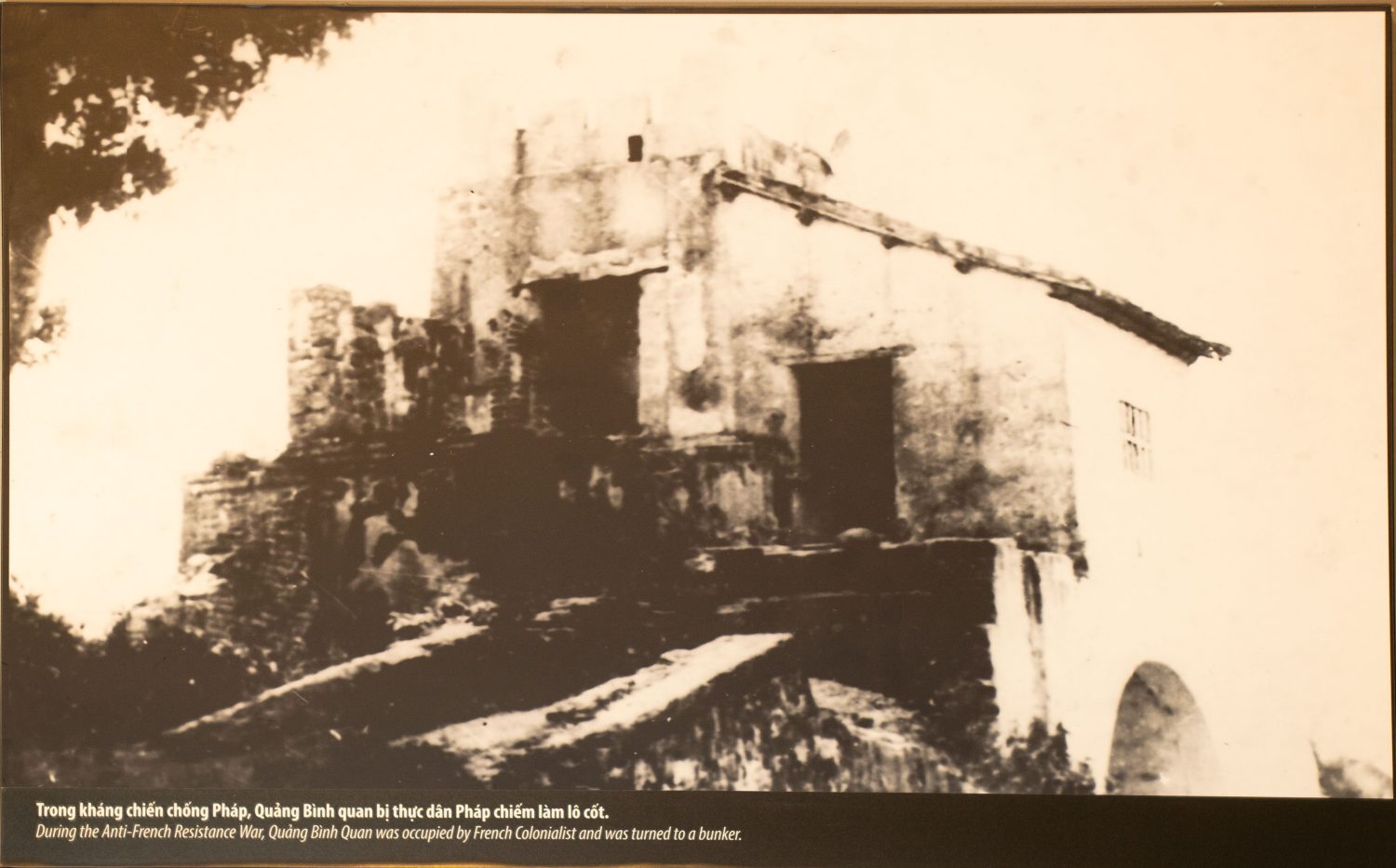
Current status and cultural value
Today, Quang Binh Gate has been restored and preserved as a significant historical site in exploring Dong Hoi. With its fortified stone gate structure and a watchtower on top, Quang Binh Gate retains the solemnity of an ancient military fort. This monument holds not only historical value but also serves as a symbol of patriotism, loyalty, and the indomitable spirit of Quang Binh’s people throughout generations.
Quang Binh Gate is also a cultural and historical symbol of Quang Binh. It showcases the strategic military brilliance of past generations and stands as evidence of a turbulent period in Vietnamese history. Today, the gate has been restored and has become a tourist attraction, drawing visitors interested in the region’s history.
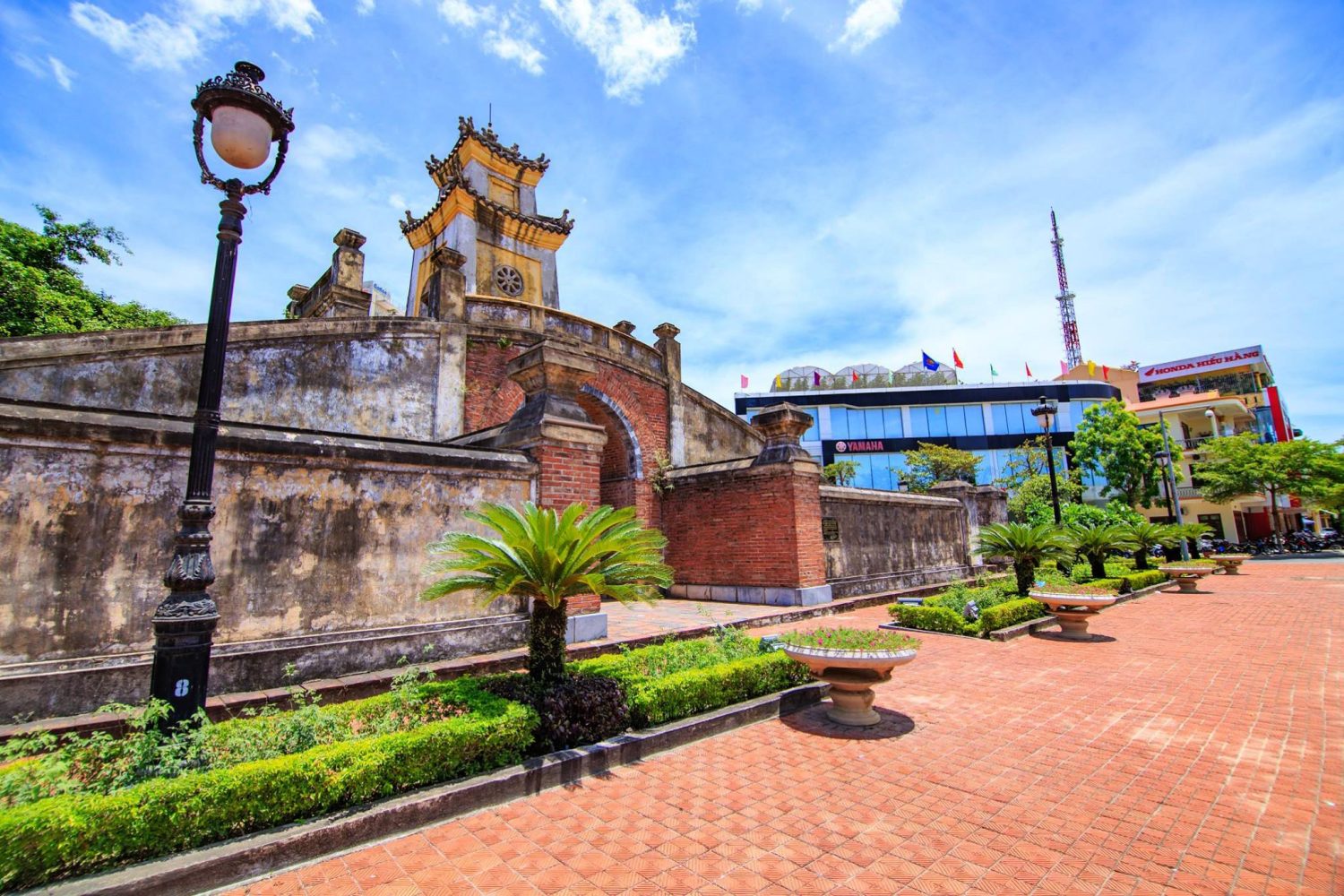
Tips for visiting Quang Binh Gate
Respect the heritage
When visiting Quang Binh Gate, tourists should maintain cleanliness, avoid vandalizing or damaging the structure, and respect historical and cultural values.
How to get to Quang Binh Gate
- Transportation: Visitors can reach Quang Binh Gate by motorbike, car, electric vehicle, or bicycle. The site is conveniently located just 5 minutes from Dong Hoi city center. For those wanting to experience the city’s atmosphere, a walk from Dong Hoi Market to the gate is also an option.
- Parking: Nearby parking spots include the Dong Hoi Market parking lot and other designated areas, with reasonable fees. Visitors are encouraged to park at official locations for safety.
Pair your trip with nearby sites
Besides Quang Binh Gate, Dong Hoi City has several other historical sites worth visiting:
- Dong Hoi Citadel: Located near Quang Binh Gate, this ancient fortress was built during the Nguyen Dynasty and played a crucial role in protecting the area.
- Monument of Mother Suot: A tribute to Nguyen Thi Suot, a courageous and resilient heroic mother during the resistance war against the United States.
- Tam Toa Church: A 19th-century Gothic-style church that stands as a testament to Vietnam’s wartime history.
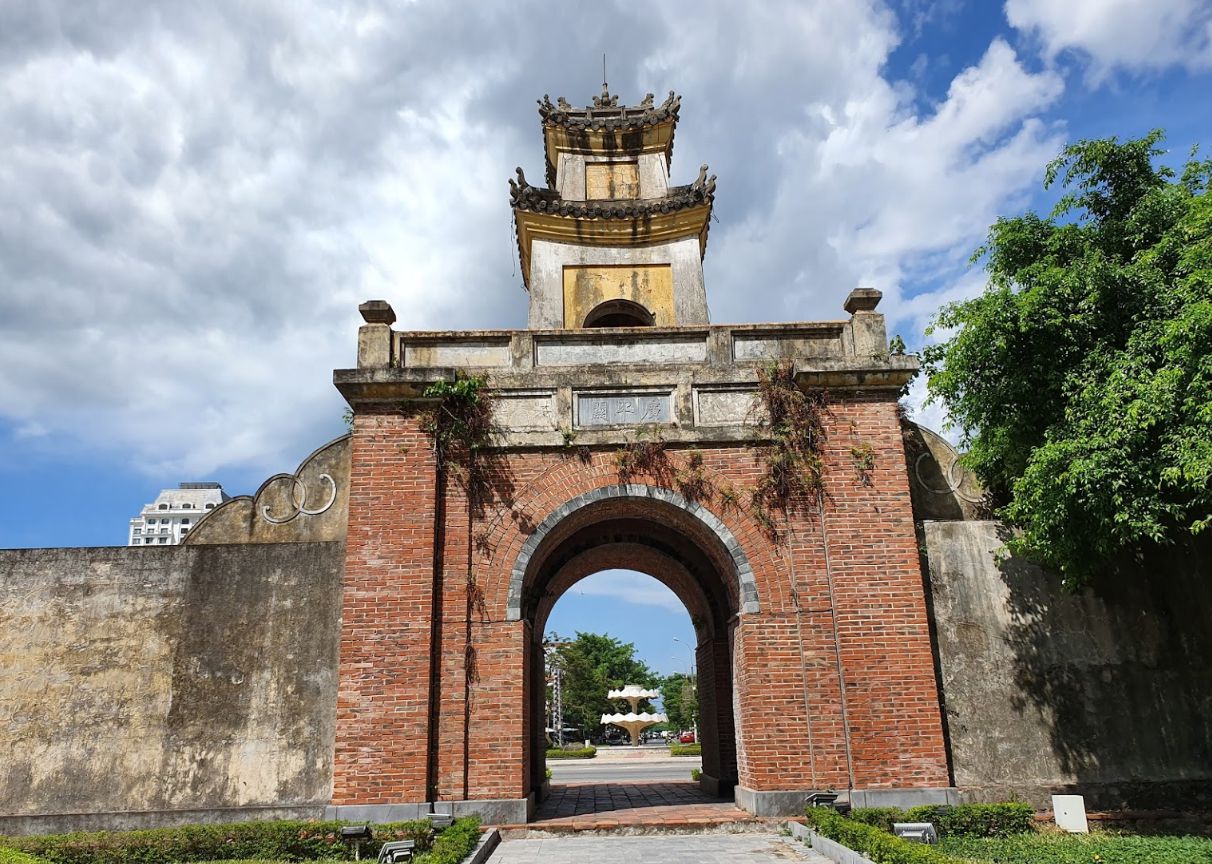
Quang Binh Gate is not only an important historical landmark in Quang Binh province but also an attractive tourist destination that offers visitors a glimpse into Vietnamese history. A visit to Quang Binh Gate provides both a deep historical understanding and the chance to admire a remarkable architectural relic. Take the time to explore and appreciate the beauty and cultural value of this 400-year-old heritage site.
Quang Binh Gate stands as a testament to the resilience and patriotism of the people of Quang Binh—a must-visit location in your journey to Vietnam’s central region.
Oxalis Holiday is a member of Oxalis, along with Oxalis Adventure–the only company authorized to operate tours to Son Doong Cave and other caves within Phong Nha – Ke Bang National Park. Oxalis Holiday specializes in offering all-inclusive tours to the most famous destinations in Quang Binh, serving as a bridge connecting travelers to breathtaking landscapes and the natural wonders of Phong Nha – Ke Bang National Park. We are not just a travel company but also a trusted partner in creating unforgettable experiences, combining adventures with moments of relaxation.
Contact information for booking tours:
Hotline: 0911030057
Email: [email protected]


